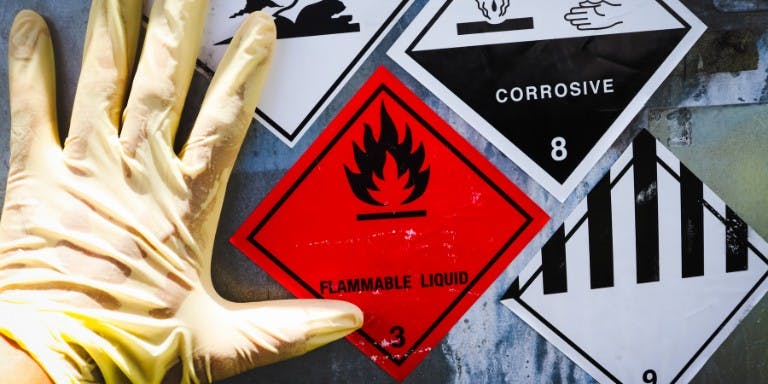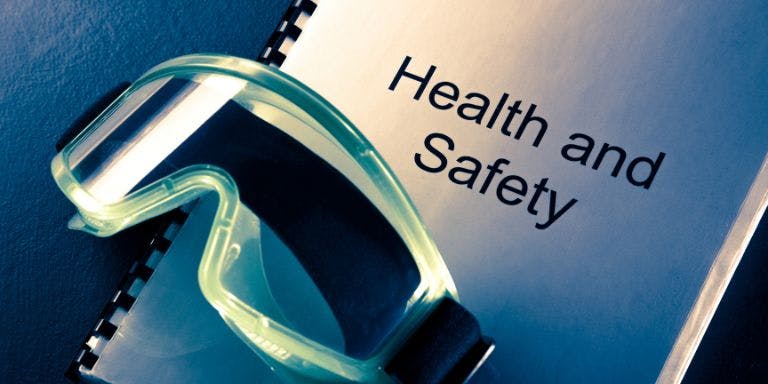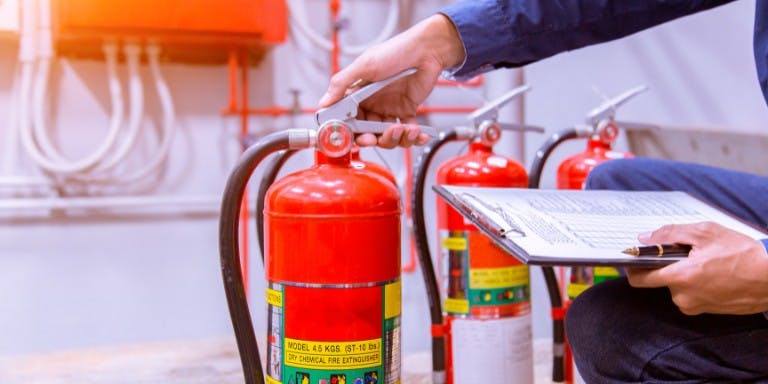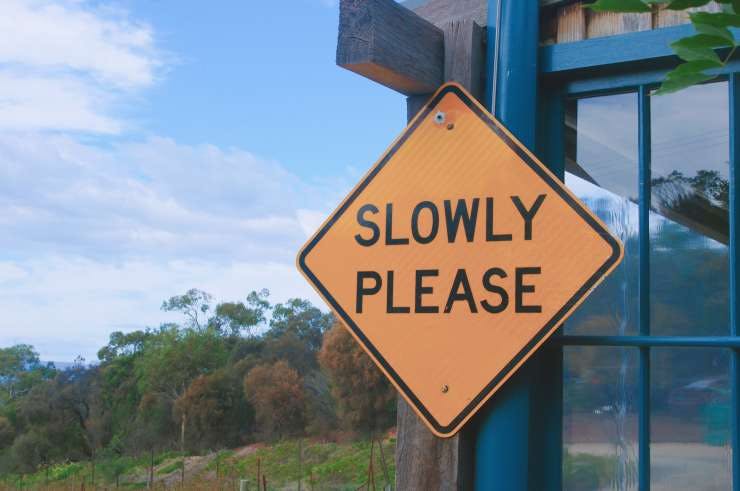First published on Tuesday, March 4, 2025
Last updated on Monday, March 17, 2025
Jump to section
If you’re an employer in the UK, you are responsible for the Control of Substances Hazardous to Health (COSHH). But do you really know what it means for your business? Whether you run a construction site, a hair salon, or an office, COSHH applies to you if there’s any risk of exposure to hazardous substances.
To help you understand your responsibilities for COSHH, let’s break it down.
What is COSHH?
COSHH is a set of UK regulations designed to protect workers from hazardous substances. In simple terms, it’s about identifying and controlling any substances that could harm people’s health. This includes chemicals, dust, fumes, and even biological agents like bacteria and viruses.
If your workplace involves cleaning products, paints, solvents, or anything that could cause harm through inhalation, skin contact, or ingestion, then COSHH is relevant to you.
What laws apply to COSHH?
COSHH is governed by The Control of Substances Hazardous to Health Regulations 2002 (as amended). These regulations fall under the Health and Safety at Work Act 1974, which places a duty on employers to ensure the health, safety, and welfare of their employees.
Other relevant legislation includes:
The Management of Health and Safety at Work Regulations 1999: Requires risk assessments, including those for hazardous substances.
The Classification, Labelling and Packaging (CLP) Regulation (EC) No 1272/2008: Ensures proper labelling of hazardous substances.
The Reporting of Injuries, Diseases and Dangerous Occurrences Regulations 2013 (RIDDOR) – Requires reporting of serious incidents related to hazardous substances.
Ignoring these regulations can lead to fines, legal action, or even imprisonment in serious cases.

Why does COSHH matter?
Besides the obvious reasons, keeping your employees safe and it’s the law, following COSHH regulations can help you:
Avoid legal trouble as non-compliance can lead to hefty fines and even prosecution.
Reduce sick days—fewer health risks mean fewer absences.
Not to mention, every year, countless workers suffer from illnesses caused by hazardous substances, leading to conditions like asthma, dermatitis, cancer and even death. HSE statistics estimate that 1.7 million workers in the UK report suffering from work-related illnesses. And the financial impact of these diseases is significant, costing millions of pounds annually in several ways:
Industries face expenses in hiring and training replacements for affected workers.
Society bears the burden through disability benefits and healthcare costs.
Individuals may find themselves out of work, facing personal financial challenges.
What you need to do as an employer
Here’s what you can do to stay compliant with COSHH:
Identify hazardous substances
Start by making a list of all the potentially harmful substances in your workplace. These could be:
Chemicals in cleaning products
Dust from construction or woodworking
Fumes from welding or painting
Biological agents in healthcare or lab settings
Check product labels and safety data sheets (SDS) to understand the risks. And make sure that hazard symbols are clear and visible to all.
Conduct a COSHH risk assessment
Once you know what you’re dealing with, it’s time to conduct a risk assessment. It’s important to note that you will need the Safety Data Sheet for each substance to identify risks and decide control measures. You are also required to conduct a COSHH assessment for every substance that is used in your workplace.
Ask yourself:
How could the substance harm someone?
Who is at risk? (Employees, visitors, contractors?)
How can exposure be prevented or minimised?
Just remember to keep a written record of your findings. This isn’t just good practice; it’s a legal requirement under Regulation 6 of COSHH (if you have five employees or more).
Control exposure
You must take steps to reduce exposure. The best approach is to eliminate the risk entirely, but if that’s not possible, consider:
Substituting a hazardous substance for a safer one
Using protective equipment (gloves, masks, ventilation systems)
Changing work processes to minimise exposure, such as using a fume extractor when welding.
Train employees
Under Regulation 12 of COSHH, employers must provide information, instruction, and training to employees who may be exposed to hazardous substances. Make sure your team knows:
How to handle hazardous substances safely
What to do in case of spills or exposure
How to use protective equipment properly
You can read our guide on COSHH training for more information on training your employees.
Monitor and review
Safety isn’t a one-time thing. Regulation 10 of COSHH requires ongoing health surveillance in certain situations, such as where workers are exposed to known carcinogens or respiratory sensitisers.
Regularly review your hazardous substance risk assessments, especially if you introduce new substances or change work processes.

What happens if you ignore COSHH?
If you fail to comply, the Health and Safety Executive (HSE) can take action. This could include:
Improvement notices: Giving you a deadline to fix non-compliance.
Prohibition notices: Stopping work immediately if there’s a serious risk.
Fines and prosecution: In severe cases, businesses have faced six-figure fines or even prison sentences for putting workers at risk.
For example, an HSE case study stated that a company in Bristol was fined £100,000 after failing to identify, prevent and control hazardous chemical exposure, leading to workers developing a disease called 'allergic contact dermatitis.'
Ignoring COSHH isn’t just a legal risk—it’s a serious moral and financial one too.
Get advice on all things COSHH from BrightSafe
Keeping up with your responsibilities for COSHH isn’t just about ticking boxes, it’s about protecting your staff and your business. And the risk of getting it wrong isn’t worth the consequences.
That’s why it’s important to get advice from health & safety experts. And a 24/7 health & safety advice line can help. Regardless of the time of day if you have any questions about COSHH regulations, you get peace of mind that you’ll get the right answer to stay on the right side of the law.











